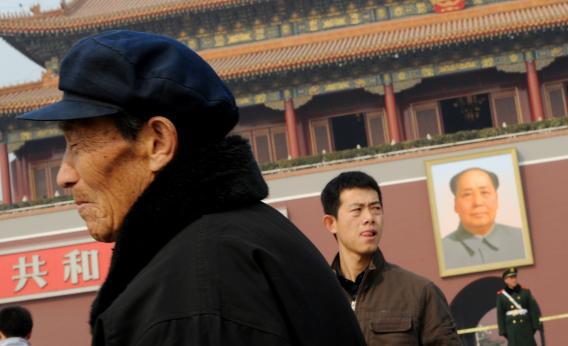While Washington wonders how soon China might overtake the United States in terms of aggregate economic output, Arvind Subramanian argues that it already happened. In other words, while the average American is still much richer than the average Chinese person, China as a whole produces more goods and services than the United States—much as our aggregate output exceeds that of richer-on-average Norway.
The key to the argument lies in the mystery of Purchasing Power Parities. To compare economies to one another, you need a common unit of account. The simplest way to do that would be to simply add up each country’s output in its native currency and then translate via market exchange rates. One big problem with this is that there’s too much instability in exchange rates. Common sense says that relative living standards in the US and Canadian are basically the same as they were three months ago. But the US dollar has depreciated 4.77 percent relative to the Canadian dollar during that time, implying that our relative GDPs have shifted by a comparable amount. Purchasing Power Parity tries to give a more realistic portrait of what’s going on by asking what a representative basket of goods (food, a car, a place to live, some haircuts) costs in Canada versus in the United States. This tends to smooth out the fluctuations and also does a good job of capturing the basic fact that the cost of living is lower in poor countries. Non-traded labor is a major element of the cost of almost everything, which means that in countries where people are relatively poor stuff is cheaper to buy meaning that the poor people aren’t quite as poor as they seem at first glance. If you’re trying to get by on $15,000 a year you’ll enjoy a higher standard of living if you do it in Mexico rather than Miami.
So far so good, but the problem with PPP-adjustment is that it’s really hard to do. What most writers, analysts, economists, political scientists and others do is just look up someone else’s calculation of PPP-adjusted GDP without worrying too much about what’s going into the adjustment. Subramanian has argued for a while now that the standard PPP-adjustment for China understated its true GDP by 27 percent and now has found Robert Feenstra, Hong Ma, Peter Neary, and Prasada Rao arguing that the real understatement is more like 50 percent.
China is a particularly tough case for PPP purposes because it’s so big, so fast-moving, and so dominated by investment and exports. Price gaps between rural and urban areas can be quite large and also something of a moving target. Meanwhile, household consumption is an unusually tiny share of Chinese output so focusing on consumer prices may miss what’s happening.
